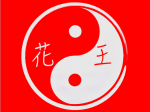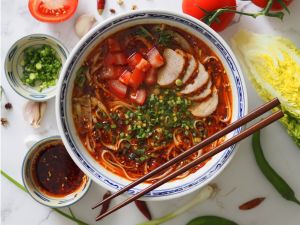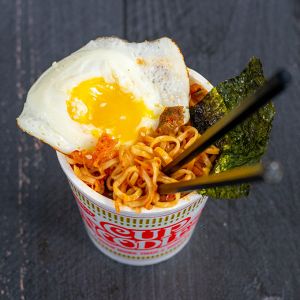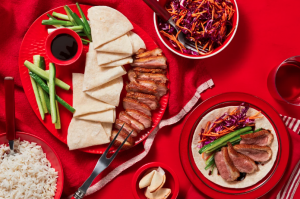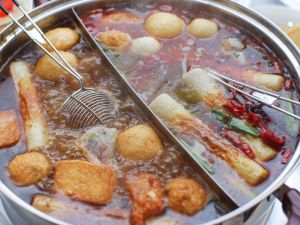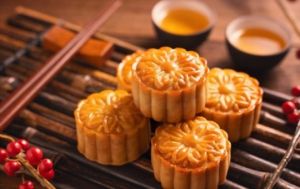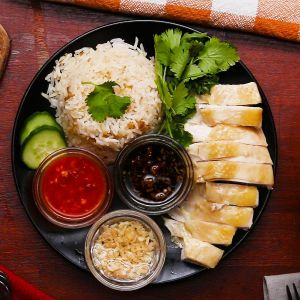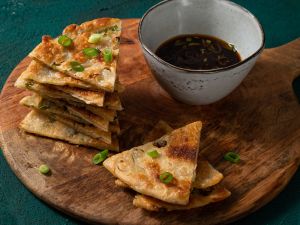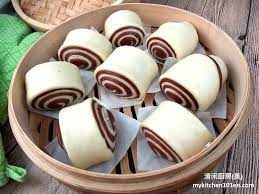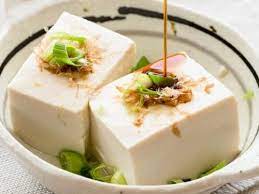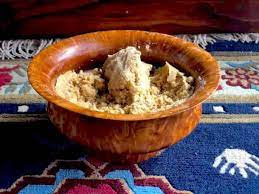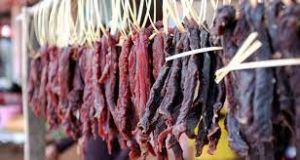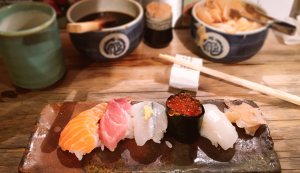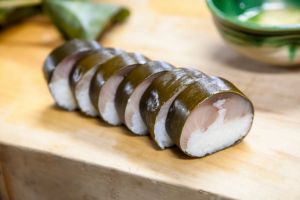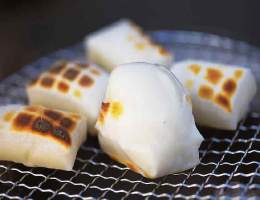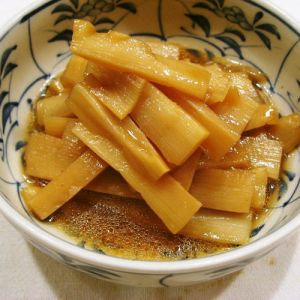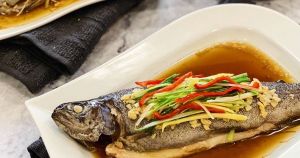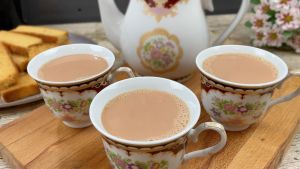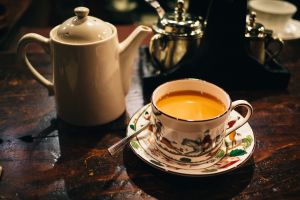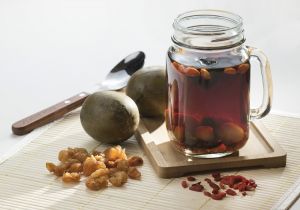Huawan (Pacifica)
The Peocracy of Huawan 花王派尼克帝国 | |
|---|---|
Motto: 神の霊を守れ! "Protect God's Spirits!" | |
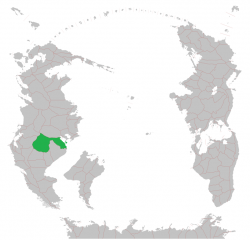 Location of Huawan in Pacifica | |
| Location | Midwest Cordilia bordered by the Xiongwei Mountains, Kringalian Strait and the South Pacific Ocean |
| Capital | Lián |
| Largest city | XinYue |
| Official languages | Huayu, Lantinen |
| Demonym(s) | Huawanese |
| Government | Federal Parliamentary Peocracy Constitutional Monarchy |
• Monarch | The Peony, Doctor Yan |
| Lord Guliu Mikuri | |
| Formation | |
• Bronze Age Pre-Imperialist Nomads | 2200 BCE |
• Hsi-Hsia Khanate | 600 BCE |
• The SongHwa Empire | 543 |
• The SeonDeok Empire | 875 |
• Altan Khanate | 1038 |
• LiuSong Dynasty | 1220 |
• The Feng Empire | 1380 |
• Taizong Dynasty | 1522 |
• Pax Paeonica | 1540 |
• Huawang Dynasty | 1721 |
• The Peocracy of of Huawan | 24th of April 1781 |
| Area | |
• Total | 490,793 km2 (189,496 sq mi) (2) |
| Population | |
• 2024 census | 210,784,428 |
• Density | 269/km2 (696.7/sq mi) |
| GDP (nominal) | 2024 estimate |
• Total | $4,769 trilion (6th) |
• Per capita | 22,626 (18th) |
| Currency | Huawan Tiol/Kuai (HTK) |
| Time zone | UTC-2 (CCT) |
| Date format | dd/mm/yyyy |
| Mains electricity | 230 V–50 Hz |
| Driving side | left |
| Calling code | +33 |
| World Forum Code | PE/PEH |
| Internet TLD | .hw |
Huawan (Traditional Script: 花王 Simplfied: Huāwān), officially the Peocracy of Huawan is a sovereign state located in the Cordillera Region of The South Pacific, its sovereign territories including Mainland Huawan sitting on the midwest of the Cordillera region. The Mainland of Huawan is situated in the border with Atemaara in the West, Mt. Kalkara in the north and the Gulf of Kringalia in the east. The Mainland shares its borders with UPRAN on the North Hystagia in the northwest, Valkyria on the northeast, Atemaara on the west, Struania on the southeast. The Peocracy of Huawan characterized itself as a Peocracy, which characterizes itself as a semi-absolute monarchy with a philosophical constitution. Its Head of State is called The Peony. Currently holding such title is doctor Yan, who has reigned since 2016 following the 2015 impeachments. The Peocracy's capital is Lian, regarded as an important centre for classical Peonic fine arts and culture, such as textile, drama, literature, music, poetry and visual arts. Renowned as a centre of Peonic education, Lian is home to the largest population of students as well as the home of Lotus University, one of the oldest surviving university in The South Pacific. The city also hosts an urban area with a total population of 4.1 million which shares the nation's iconic lush forests and natural wonders. The Crown Commonwealth also includes the Jäähua Arctic republic, the Hai Lan Autonomous Territory and the Autonomous Prefecture of Mira. Other major cities in Mainland include XinXian, XinYue, Hai Lan, Minami, Hanko, Touhou, Meikhot, Riven and Kaarija.
Traces of history in Huawan dates back to the Bronze Age, with several empires and dynasties ranging from nomadic tribes to prosperous economical powers. Its independence dates on 24th of April 1761 after the War of the Red Moon. Huawan is notable for its lush forests, clean air and tall mountains, with the highest point of the region lying in the permafrost Xiongwei Mountains. Huawan is also prominent for its keen interest in environmentalism and sustainable development, as well as sharp interests in healthcare and scientific research, where it is a leading voice in the region for medicine and medical research. It is also famous for its agriculture industry, where the country commands the region's tea, coffee and rice trade. Huawan is also home for the first High Speed Rail, known as the Jisuressha, and a frighteningly efficiently extensive railway network as well as home of the first supersonic passenger jetliner, the CM SST.
At its height in the 16th century of the Taizong Era led by Raina Taizong, the empire commanded the seas between the east and west where prominent trade and piracy provided influence can be observed in the language, culture and political systems of many of states. Huawan currently possess a high-income economy and a very high human development index rating, ranking 3rd in the world. It was the world's first in healthcare and life expectancy. The Peocracy remains a great power, with considerable economic, cultural, military, scientific and political influence internationally. It has the sixth in military expenditure in the world.
The country is also famous for its naval superiority, commanding the regional seas for centuries in piracy, trade and exploration. Notable for its gigantic treasure ships, floating cities 135 metres long and 55 metres wide. Beginning from the piracy of The Peony, Mangling Mangsten, and growing traction under The Peony, Shao Yan, noted infamously as the pirate queen of the known world. Piracy by the country plagued the region for centures, with its fleets rivaling those of countries with much more superior technology. The nation commanded the seas between the 14th to the mid 19th century, and restarted its firm grasp in the 21st century, holding an strong navy alongside The Kingdom of Sedunn. The nation is also famous for its part in the Great War and the Iron Century, with the former being one of the most prominent belligerents in the Great War and the latter being instrumental in events such as the Government Island Crisis.
The end of the Great War also saw Huawan with rapid industrialization and weariness for Allied influence in the region. The rapid proliferation of nuclear missiles in Huawan in 1957 brought to the beginning of the Iron Century, seeing coalition blocs united under various mutual pacts and government treatises. During the Iron Century Huawan produced many significant social and technological achievements and innovations. It had one of the the world's largest economy, and the Peonic Armed Forces comprised the largest standing military in the world. An TPNW-designated state, it possessed the largest arsenal of nuclear weapons in the world until its dismantling. It was a founding member of the WF as well as one of the leading chairs in the organization. From the end of The Great War until its dissolution, the country maintained its status as one of the region's superpowers, alongside Ryccia, The Frost Empire, Pelinai, Sedunn and Sallodesia, through its hegemony in Central Cordilia, military and economic strengths, aid to developing countries, fast infrastructural development, naval superiority and scientific research.
History
Prehistory and antiquity (Approx. 800,000 BCE - 500 BCE)
In the shadow of the imposing Xiongwei mountain range, the cradle of Huawanese history, early humanoids adapted to the challenges posed by the rugged terrain. Archaeological findings reveal settlements dating back 800,000 years, showcasing their resilience through crafted stone tools, communal hearths, and primitive shelters.
As tectonic forces shaped the landscape, these early communities left traces in pottery fragments and tools. The Xiongwei's influence fostered diverse ecosystems, influencing the symbiotic relationship between humans and nature. Prehistoric sites like the Eastern Caves of Sapphire and Topaz Cave of Mianping showcase Paleolithic art, depicting daily life, hunting, and spiritual symbols.
Hunting scenes dominate the art, reflecting the inhabitants' prowess armed with tools from the Xiongwei. Mystical symbols, representing celestial bodies and cosmic patterns, hint at their spiritual beliefs, creating a rich tapestry of cultural diversity.
The Xiongwei evolved into a symbolic entity, physically separating tribes and catalyzing distinct languages and customs. Nomadic tribes organized around the five main rivers, each shaped by the mountains, influencing nomadic life. Maaism, the ancient religion, portrayed the Xiongwei as pillars connecting the mortal realm and the divine, with the rivers as lifeblood.
Ancient megaliths, the Hill Stones, found across Cordilia, serve as guardians of the dead and lessons for the living. In Maaism, these stones connect the deceased to the heavens, symbolizing the spiritual interconnectedness of the land. Rituals honored celestial forces for bountiful harvests and protection, marking an era of spiritual reverence in Huawan's early history.
Early States
Xiong Confederacy (500 BCE - 48 AD)
The expansive and challenging geography of ancient Huawan, surrounded by natural barriers like the Xiongwei Mountains and the Kalkara Mountains, shaped the nomadic way of life. This unique landscape, resembling an alpine fortress, not only limited migrations but also acted as a natural defense against external invasions.
Nomadic clans, bound by language, religion, and shared customs, formed the foundation of cultural unity. The consolidation of these clans gave rise to the Xiong Nomadic Confederacy in the 3rd Century BCE, documented in the Chronicles of Xiong. Led by Mandu, a formidable war monk, the Xiong expanded through conquest, reaching its zenith in 200 BCE.
Mandu's pivotal campaign against the Valkyrian Jarldom in 198 BCE nearly eradicated the Jarldom, establishing the Xiong as a prominent force in southern Cordilia. Mandu's leadership extended the Xiong Empire's influence to Techganet in the south and Alla-gy in the north, subjugating various nomadic communities, including the Joho.
Despite Mandu's conquests, internal divisions weakened the Xiong Empire in 48 AD, leading to its fragmentation into smaller kingdoms. The Tienvien rebellion in 93 AD marked the end of Xiong influence and the rise of the Tienvien Empire. Recent archaeological findings in Zhan suggest potential connections between the Xiong and broader South Pacifican cultures over 2000 years ago.
Tienvien Empire (93 AD - 330 AD)
The aftermath of the Xiong Empire's fall in 93 AD witnessed the rise of the Tienvien Empire, ushering in an era that blended nomadic traditions with Vietic influences. The Tienvien, led by Lanh Quoc, consolidated power by expelling the Xiong from the south and subjugating them in the north. The Tienvien's democratic approach, economic diversification, and shift towards settled agriculture marked a departure from the Xiong's autocracy.
Under Lanh Quoc's leadership, the Tienvien faced external threats but successfully repelled invasions by Rhaynans and Valkyrians. Despite challenges in reconciling nomadic roots with agricultural permanence, the Tienvien achieved a delicate synthesis. The capital, Tienhong, became a symbol of this blend, featuring temples and pagodas coexisting with yurts and markets.
Culturally, the Tienvien era witnessed a remarkable synthesis in temple constructions, seamlessly blending nomadic and Vietic architectural elements. Temples showcased tiered roofs reminiscent of nomadic yurts, serving as both cultural markers and spiritual cores. Tienvien temples stood as a testament to the empire's commitment to unity amidst diversity.
In warfare, the Tienvien employed mounted archers and temporary war leaders. Their influence extended over parts of Central and Southern Cordilia until internal conflicts led to succession wars. Amidst this turmoil, the Tunu, aligned with Mudan monks, seized control of the Xiongwei mountains and dominated central Huawan, marking the Tienvien's dissolution.
Though short-lived, the Tienvien Empire's legacy endured, shaping a new identity that emphasized agricultural permanence. The Tienvien era left an indelible mark on Huawan's history, influencing subsequent civilizations in this ever-evolving land.
The Tunu Theocracy (330 AD - 756AD)
The period following the dissolution of the Tienvien Empire in 330 AD witnessed the rise of the Tunu Theocracy, characterized by the ascendancy of war monks and the consolidation of Maaism. This epoch marked an age of theology and philosophical study, with Maaism serving as the cornerstone, embodying enlightenment, moral conduct, and the interconnectedness of all things.
In the late 5th century, the Tunu established a powerful nomadic empire, expanding south and north of Alla-gy, and forming alliances, notably with the Valkyrian Jarldoms. Led by the Zhuchi-Khan, who served as both a political and spiritual leader, the Tunu challenged norms by allowing women in offices and recognizing unmarried women as citizens. This progressive stance laid the groundwork for societal changes influencing subsequent civilizations.
Agricultural reform and economic diversification marked the Tunu era, with far-reaching trade routes extending to Frastinia. Jade mining gained prominence, becoming not only a sought-after commodity but also a symbol of spiritual significance. Despite challenges like prevalent slavery, the Tunu era fostered a cultural renaissance, where monasteries became hubs of research and education.
Monastic scholars engaged in ethical inquiry and moral philosophy, giving rise to texts like the "Enlightened Edicts" and the "Harmony Sutras." Maaist rituals became integral to daily life, emphasizing balance and enlightenment. Tunu temples, blending nomadic and Vietic elements, stood as architectural marvels, symbolizing the profound connection between the mortal realm and the divine.
At the core of the Tunu Theocracy were revered war monks, clad in distinctive white head robes and green armor. Their disciplined cavalry troops rendered them a formidable force, extending Tunu influence beyond Huawan. Intriguing alliances with the Valkyrian Jarldoms led to Viking expansionism and commerce in central Cordilia.
Despite westward expansion and success, the Tunu faced a crisis of faith, leading to the emergence of Tunnism and internal strife. The fall of the Tunu is attributed to widespread corruption and mismanagement, evident in the "Tales of The Blood Orchid." A renewed consolidation under Zhuchi-Khan Tujue posed a brief threat, but the Tunu ultimately succumbed in 756 AD to joint efforts by Valkyrians, Aegians, Shi Di, and other nomadic forces.
In the aftermath, the Shi Di established the Shi Dynasty, marking the establishment of XinXian, one of the oldest major cities in Huawanese history. The Tunu era left a lasting legacy, influencing subsequent civilizations and shaping the intricate tapestry of Huawan's history.
The Shi Dynasty (720 AD - 1091AD)
The disintegration of the Tunu Theocracy paved the way for the rise of the Shi Di, who seized control of the nomadic confederacies and established the Shi Dynasty. XinXian became the heart of political, cultural, and economic activities, setting the stage for a transformative era.
The early Shi rulers prioritized stability and administrative reforms, steering away from blind adherence to faith. Supreme Emperor Chang Mao dedicated his reign to quelling nomadic warlords and bandit raids, aiming to mend the wounds of the Tunu era.
The Shi Dynasty reached its zenith, expanding influence over Valkyria, Hystaiga, Corinia, Karnetvor, Techganet, and Alla-gy. The empire consolidated into a Cordilian dynasty, constructing cities, establishing dominion over agricultural domains, and fostering a symbiotic relationship between nomads, fishermen, and croppers.
A cultural renaissance unfolded under the Shi rulers, venerating the connection between humanity and nature. The Imperial Gardens of XinXian and the philosophy of "Harmony with Nature" reflected this ethos. The Jade Palace and other grand architectural projects symbolized Huawanese grandeur and cultural vibrancy.
Political intrigues unfolded within the imperial court, where factions engaged in power plays. Imperial consorts, forming the Imperial Harem, played pivotal roles in shaping the empire's destiny. Maritime exploration and the establishment of an Imperial navy marked the Shi Dynasty's unique emphasis on the seas.
The Shi maintained peaceful relations with Valkyria, leading to the Corin Protectorate's formation. Emperor Wenshu's reign marked a pinnacle of cultural achievement, with the Imperial Academy and the Library of XinXian becoming renowned centers of intellectual brilliance. The "Scrolls of Wisdom" compiled during this period represented a monumental repository of knowledge.
However, the Shi Dynasty faced challenges, including persistent nomadic incursions, internal power struggles, natural disasters, and economic strains. Administrative inefficiencies and corruption eroded central authority, leading to increased autonomy among regional governors. As challenges mounted, the Shi Dynasty entered a period of decline.
The Shi Dynasty's decline culminated in its demise around 1091 AD, marking the beginning of the "Comedy of the Lotus." Despite its fall, the Shi Dynasty's legacy endured, shaping the values and aspirations of contemporary Huawanese society. The grand architectural achievements, philosophical advancements, and cultural patronage left an indelible mark on the region's history, influencing the subsequent chapters of Huawanese civilization.
The Comedy of the Lotus (1091 AD - 1183 AD)
"The Comedy of the Lotus," commencing around 1091 AD, marked a tumultuous era in Huawanese history characterized by political intricacies, military conflicts, and fluid alliances. The term derived from the city of Lian, where struggles for dominance unfolded. While the term "comedy" may imply lightheartedness, it reflected historical irony, with reality surpassing embellishment.
In the waning years of the Shi Dynasty, treacherous eunuchs and officials led to corruption and the decay of the Shi. A peasant rebellion known as the "Fire Foxes," led by Lin Jin, erupted. Emperor Bhuta's assassination and the installment of Emperor Shao triggered a power struggle, inviting ambitious warlords to compete for supremacy.
The aftermath of the Shi Dynasty's collapse resulted in Huawan's fragmentation. Independent states emerged, rooted in distinct tribal cultures. The State of Rong thrived in the east, while the Fan State, with a unique sea animism belief, dominated the southeast. Western and central regions experienced conflict as warlords vied for power.
Lian, associated with the imperial seal of the Lotus, became the imperial capital under Warlord Jungdu's control. Political intrigue, betrayals, and power shifts characterized this dark period. Ogujin's failed assassination attempt and subsequent deception questioning the Lotus seal sparked a coalition against Jungdu. Despite initial victories, internal strife led to the coalition's dissolution, allowing Jungdu to maintain control.
Jungdu's regime was marked by betrayal, including his murder orchestrated by his foster son Zhangdu. Warlords like Mangsten Garam and Ogujin rose to prominence. Ogujin's Jin State seized Lian, toppling Zhangdu's regime.
By 1115, Ogujin dominated Central Huawan, but his capture by the Masako tribe led to his execution and succession by Megujin. Tribal conflicts and power struggles ensued. The Masako and Zhan dominated central Huawan, while the Fan and Rong aimed to conquer the imperial provinces. The struggle for supremacy intensified, plunging Huawan into an era of uncertainty and conflict.
Administrative inefficiencies and corruption resurged, and internal strife mirrored the fall of previous dynasties. External threats persisted, with nomadic incursions and border skirmishes. Emerging states embraced diverse cultural influences and governing ideologies, contributing to the complexity of the political landscape.
The Comedy of the Lotus set the stage for the next chapter in Huawanese history. Rival states clashed, formed alliances, and engaged in diplomatic maneuvers, sowing the seeds of future unification. In a series of intrigues, Mangsten Garam seized control of the Masako Dynasty, bringing an end to the Comedy. The Masako Dynasty, holding the imperial seal, united all Huawanese lands, marking a turning point in the nation's history. The Comedy, despite its seeming insignificance, served as a transitional period that left a lasting imprint on Huawan's destiny and character.
Rex Paeonica to early 20th century
The Great Masako Dynasty (1091 AD - 1392 AD)
The Masako Dynasty, emerging from the turbulence of the Comedy of the Lotus, ushered in a transformative era under the visionary leadership of Warlord Garam Mangsten. This dynasty went beyond addressing immediate challenges; it aimed to unify the Huawanese peninsula, fostering healing, enlightenment, and progress.
Garam Mangsten envisioned a golden era emphasizing unity and collective progress. The imperial court diligently worked towards pacifying regions and reconciling differences, creating a sense of collective purpose that shaped Huawanese cultural and societal identity.
The Masako Dynasty distinguished itself in cultural contributions, particularly in religious philosophy and the arts. The establishment of the Khuu, a united religious order, fused Maaism and Tunnism, promoting harmony and sustainability. The Khuu Order, originating from "The Sanshizang Masakosa," provided a unified path for practitioners, reflecting the dynasty's commitment to spiritual harmony.
Technological advancements, including movable-type printing and paper currency, transformed the economic landscape. Taxation and bureaucratic reforms curtailed corruption. The rise of imperial warriors, the Avashi, and the Avashi Code contributed to military strength and provincial governance.
Under Gazar Khan Teemu Mangsten, the Masako Dynasty expanded, creating the Central Cordilian Confederacy. The unification of central Cordilia consolidated control over the Kringalian Strait, leading to tensions with Karnetian Emperor Philip II. The naval conflict and subsequent crusade, marked by the Red Ocean War, showcased the Masakonese navy's resilience and diplomatic finesse, ultimately leading to peace.
The Golden Road, a vast trade network, facilitated cultural exchanges, contributing to Huawanese civilization's vibrancy. The Masako Dynasty actively encouraged the exchange of ideas, fostering an environment where innovation and progress flourished.
Admiral Shen Xiaotian's maritime expeditions expanded geographic understanding and facilitated cultural exchanges beyond Cordilia. The Celestial Academy became a hub for intellectual pursuits, translating texts and contributing to advancements in various fields.
The Golden Road promoted religious tolerance and collaboration. The Imperial Synod convened to foster understanding among diverse spiritual practices. The dynasty's openness allowed Islam to enter Huawan.
As the Masako Dynasty thrived, it faced internal challenges. Succession questions and aristocratic power struggles tested its resilience. The Baturu of Touhou orchestrated the "Play of the Wolf," leading to the establishment of the Taizong imperial line.
The Masako Dynasty's legacy reached beyond geographical boundaries, shaping Cordilian history. The Golden Road's influence laid the foundation for a globalized Cordilia. The echoes of the Masako Dynasty continued to reverberate through the ages, influencing the rapidly evolving South Pacific.
The Great Taizong Dynasty (1392 AD - 1782 AD)
The Peocracy of Huawang (1782 AD - )
Geography
Climate
Flora and fauna
Politics
Government
Government Buildings
| Name | Designation | Location | Description | Picture |
|---|---|---|---|---|
| Royal Palace of Lian | Royal Government Palace, National Government Office | Lian, Royal Province | Constructed in the Huawang dynasty upon the end of the Feng dynasty. It became the royal house of the Peonic royal family as well as the central office of government. However, when the era of the Shogunate came along, efforts to decentralize power in Lian came to play. As such, the Royal Palace now become the office for the High Diplomat, the High Commodore, the Royal Premier, the Royal Exchequer, the Imperial Military Advisor.
|
|
| Devotion Hall | Main Hall of Ministries | Sheng Ji, Royal Province | The Devotion Hall is the office | |
| Ryoko Stronghold | Defense and Military Council Headquarters | Kenyama, Royal Province | The Central Military Headquarters of Huawan is sited in Ryoko Stronghold, which also houses the Military Museum of Huawan. While it is not the central command post, it is the main office for the five Peonic militaries. The Armed Forces, the Royal Navy, The Air Service, PRiM2 and the Expeditionary Forces. | |
| Central Hall | Office of the Central Government | Xin Xian, Central Province | For the Central government headquarters, as well as the office of the Central Government. The Central Governor hall houses the Central Governor and the Central Council of Administrators. The Central Hall is located in ZeShui and used to be the merchant's hall in the Feng Dynasty. It also houses the museum of Royal History. | |
| Eastern Hall | Office of the Eastern Government | Hai Lan, Special Region Hai Lan | For the Eastern Government, sited in Hai Lan it is a fairly new structure. The office was the old office of the maritime chancellery and the High Commodore. However, the office is moved to Port Serenade and the Eastern Government is sited in the old office of the maritime chancellery until the Governor is elected. As such the office currently houses the transitional government for the Eastern Region. | |
| The Court of Huawan | Lower Legislative Assembly, People's Council | XinYue, Royal Province | The DanYang Castle was the Highest Judicial Palace of the Masako Dynasty as well as the symbol of tyranny in Peonic History. The internal areas of the palace were filled with riches and gold that it was a mark of an extreme oligarchy and separation of the rich and the poor. Upon the Huawang dynasty, Empress Mangling Mangsten ordered that the DanYang Castle became a place of equality. Thus became the Court of Huawan, and the birth of the People's Council. The People's Council is akin to the Lower House of Legislature
The People's Council is a united voice of the Peonic state. But there are three chambers in the People's Council to divide the discussion into different regions. The Central Chamber, The Eastern Chamber and the Cooperation Chamber. The Central Chamber discusses the Central Region, The Eastern Chamber discusses the Eastern Region and the Cooperation Chamber houses various representatives from all the Peonic Cooperatives. |
|
| Ancestral Hall | Upper Legislative Assembly, Royal Council | Sheng Ji, Royal Province | The Royal Council, which is the upper house of the legislature that deliberates any edicts that would pass and its membership appointed by the Royal Premier based on applications. The Ancestral Hall housed the Royal Council and the office of The Royal Premier. It is amongst one of the oldest structures in Huawan, and its structure is chosen for its humility. | |
| Taiyo Court | Supreme Court | Lian, Royal Province | The Supreme Court of Huawan is governed in the Taiyo Court. The building is called Taiyo because the heat of the sun could warm people in a spirited defense, or burn the criminals in brutal prosecution. The building is rather new and was introduced in Akane Yan's rule, the Taiyo Court is sited in Lian. |
Political parties
Law and judicial system
Administrative divisions
Foreign relations
Military
Economy
Agriculture
Tourism
Energy
Infrastructure
Science and technology
Demographics
Urban areas
Language
Religion
Education
Healthcare
Immigration
Famous Sedunners
Culture
Value system and society
Holidays
Literature
Arts
Music
Cinema
Media
Architecture
Cuisine
Foods of Huawan
